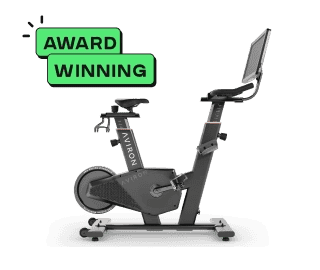Introduction
So, you've decided to embark on a rowing adventure, huh? Welcome aboard this fantastic fitness journey! We know there's one major question burning in your mind: Which rower is the ideal one for a novice like me? Let's take a deep dive and unveil the mystery behind choosing the perfect rower for beginners like you. Don't fret; we're here to light the way and guide you through this process step by step.
Why Choosing the Right Rower Matters
You might be wondering, why does it even matter which rower I choose? Well, dear reader, it matters more than you might think. Your choice of rower profoundly influences not just the effectiveness of your training but also your comfort, safety, and overall motivation to stick with this fantastic exercise.
Choosing the right rower is the first step towards ensuring you have a fruitful and enjoyable rowing journey. A poor choice could lead to discouragement, potential injury, and an overall unpleasant experience. On the flip side, the right rowing machine can turn your fitness journey into something you look forward to each day, bringing both enjoyment and health benefits.
Anatomy of a Rower
To fully appreciate what makes one rower different from another, we need to understand the main components of these machines. What are the bits and pieces that come together to make a rowing machine? Let's break it down.
Handlebars and Resistance
At first glance, these two components might seem unrelated. But in reality, they work together to dictate the intensity and feel of your workout. The handlebars should be ergonomically designed to offer a comfortable grip, and the resistance mechanism must be adjustable to accommodate your evolving fitness level.
Seat and Rail
The seat and rail are arguably the heart and soul of your rowing machine. You'll spend a significant amount of time seated, pushing back and forth along the rail. The seat must be comfortable and designed to reduce strain on your lower back. The rail, on the other hand, should allow smooth movement back and forth and be long enough to accommodate your leg length.
Footrests and Straps
Footrests and straps may seem like minor components, but they are key for stability and efficient power transfer during your workout. The footrests should be adjustable to fit your foot size, and the straps must securely hold your feet in place without causing discomfort or restricting movement.
Types of Rowers
Alright, we've looked at the basic components of a rowing machine. Now let's delve into the different types of rowers available in the market. Knowing the pros and cons of each can help you make an informed decision about the best fit for you.
Hydraulic Rowers
Hydraulic rowers use fluid-filled cylinders to provide resistance. These machines are typically more compact and quieter than other types of rowers, making them perfect for those tight on space or wanting to exercise without disturbing others. However, their rowing motion isn't as smooth or natural as other types, which might be a downside for some.
Magnetic Rowers
Magnetic rowers use magnetic resistance, providing a very smooth and quiet workout. They're also renowned for their durability, but they tend to be more expensive due to the technology involved.
Air Rowers
Air rowers operate using air resistance. The unique feature of these machines is their dynamic resistance - the harder you pull, the tougher the resistance gets. This mimics the natural feel of rowing on water and provides an efficient full-body workout.
Water Rowers
Finally, we have water rowers. These machines use water stored in a tank to provide resistance, simulating the feel of actual rowing most closely. They offer a strong, smooth rowing stroke but can be a bit bulkier and louder than other types.
What to Consider When Choosing a Rower
Selecting the ideal rowing machine for you involves a number of key factors. From your fitness goals and available space to budget and preference for certain features, the decision-making process can be intricate. But don't worry; we're here to break it down and make it simpler for you.
Your Fitness Goals
First and foremost, consider what you're looking to achieve through rowing. Are you aiming for weight loss, muscle building, cardiovascular fitness, or a combination of these? Different types of rowers and resistance mechanisms can be more suited to certain goals.
For example, if you're after a powerful, intense workout that closely simulates outdoor rowing, air or water rowers may be your best bet. If noise level and space are concerns, a hydraulic rower might be more suitable.
It's also important to consider how the rower will fit into your overall fitness routine. Will you be using it as your main form of exercise, or to supplement other workouts? Understanding your fitness goals can help guide your choice of machine.
Space Considerations
Rowing machines can be sizeable pieces of equipment. Before making a purchase, measure the space where you plan to use and store the rower. Consider not only the machine's length and width but also the height, especially if you plan to use it in a room with low ceilings.
Some rowers are foldable or more compact than others, making them an excellent choice for small spaces. Magnetic and hydraulic rowers are typically more compact, while air and water rowers often take up more space.
Budget
Budget plays a significant role when choosing a rowing machine. They come in a wide range of prices, with varying features and build quality. Some machines, like hydraulic rowers, can be relatively cheap but may not provide the most authentic rowing experience. At the other end of the spectrum, water rowers can provide a very natural feel but may be more expensive.
It's crucial to determine what you can afford without compromising too much on essential features and durability. Remember, a rowing machine is an investment in your health and fitness, so it may be worth considering a higher-priced model for better quality and longevity.
Noise Level
The noise level produced by a rowing machine is another important factor to consider, especially if you live in an apartment or plan to workout while others are home. Hydraulic and magnetic rowers are generally quieter, while air and water rowers can be noisier due to their resistance mechanisms.
Maintenance
All rowing machines require some level of maintenance to keep them in top shape. This could include oiling the chain, replacing the resistance mechanism over time, or regular cleaning. Some rowers, such as water rowers, require more maintenance than others, so consider how much time and effort you're willing to put into maintaining your machine.
Ergonomics and Comfort
Comfort is vital to ensure you keep up with your workout routine. Check the seat, handles, and footpads for comfort and adjustability. A good rowing stroke involves the whole body, so ensure the machine can accommodate your body size and strength.
Resistance Type
As mentioned before, different rowers use different types of resistance: air, water, magnetic, and hydraulic. Each has its own set of pros and cons. For instance, air and water rowers offer a more realistic rowing experience, while magnetic and hydraulic ones are usually quieter and require less maintenance.
By considering all these factors and understanding how they align with your personal needs and circumstances, you'll be well-equipped to make an informed choice when selecting the perfect rower for your fitness journey.
Why Aviron is Ideal for Beginners
At this point, you might be wondering: among all these options, which is the most beginner-friendly? Here's where Aviron rowers come into the picture. With their intuitive, user-friendly design, durability, and versatility, they stand out as a fantastic choice for beginners. Aviron rowers offer the perfect balance of comfort, adjustable resistance, and interactive features that will keep you engaged and motivated throughout your fitness journey.
Conclusion
Choosing the right rower may seem daunting, but it doesn't have to be. Keep these considerations in mind, remember to try before you buy, and always go for what feels best to you. The perfect rower for you is the one that you'll enjoy using consistently, and that makes you look forward to your workouts. Aviron could just be the ideal start to your rowing journey!
FAQs
Q: Is rowing suitable for beginners?
- A: Absolutely, rowing is a great low-impact exercise that's suitable for all fitness levels.
Q: What is the difference between air and water rowers?
- A: Air rowers provide variable resistance depending on your rowing intensity, while water rowers simulate the feeling of actual rowing.
Q: How often should a beginner row?
- A: Start with 2-3 sessions a week, gradually increasing as you build stamina and strength.
Q: Can rowing help with weight loss?
- A: Yes, rowing is a full-body workout that can significantly aid in weight loss when combined with a balanced diet.
Q: Why choose an Aviron rower?
- A: Aviron rowers are user-friendly, durable, and interactive, making them ideal for beginners. They offer a balance of comfort, resistance, and engaging features to keep you motivated.


